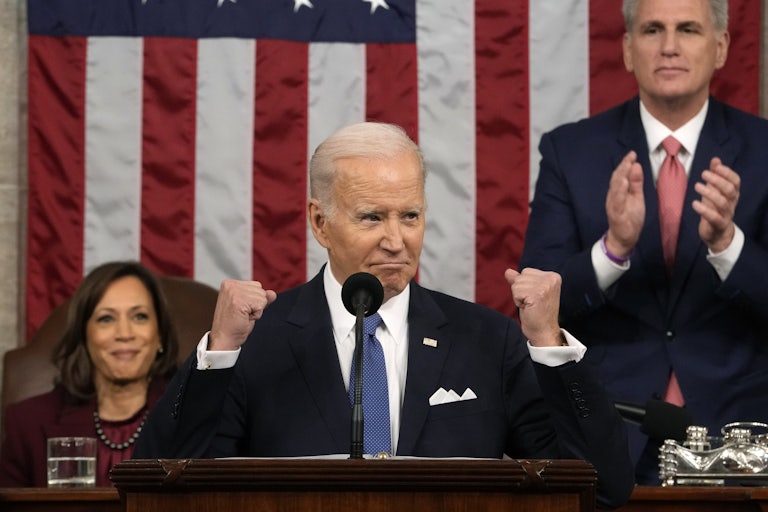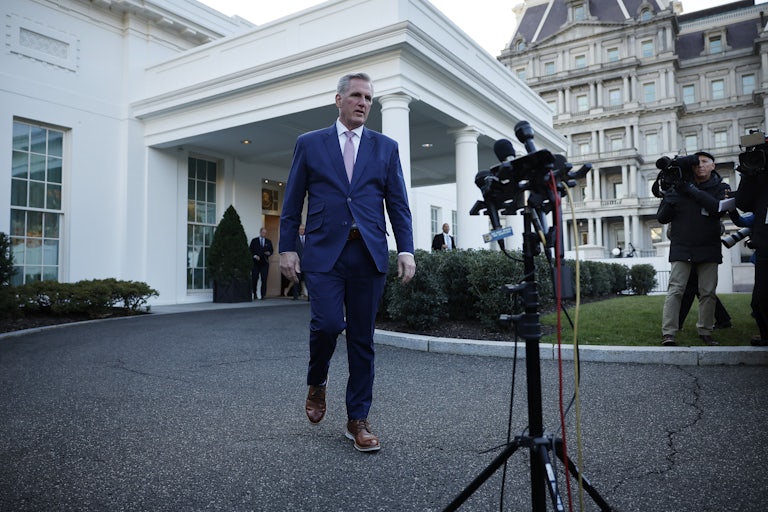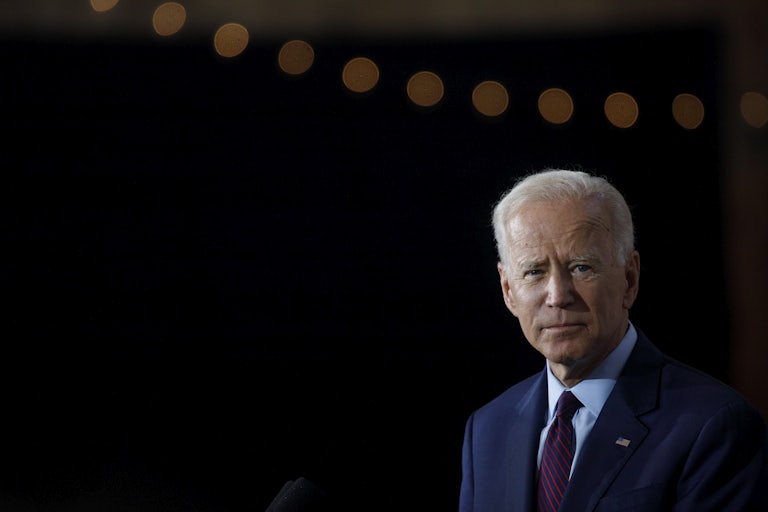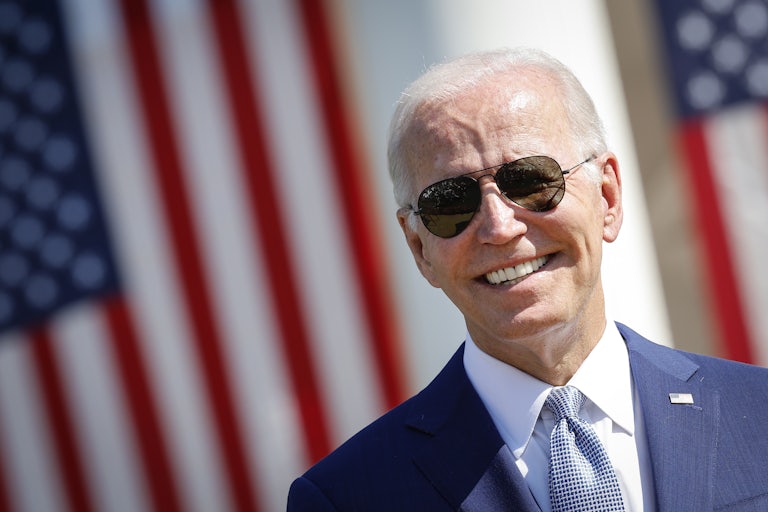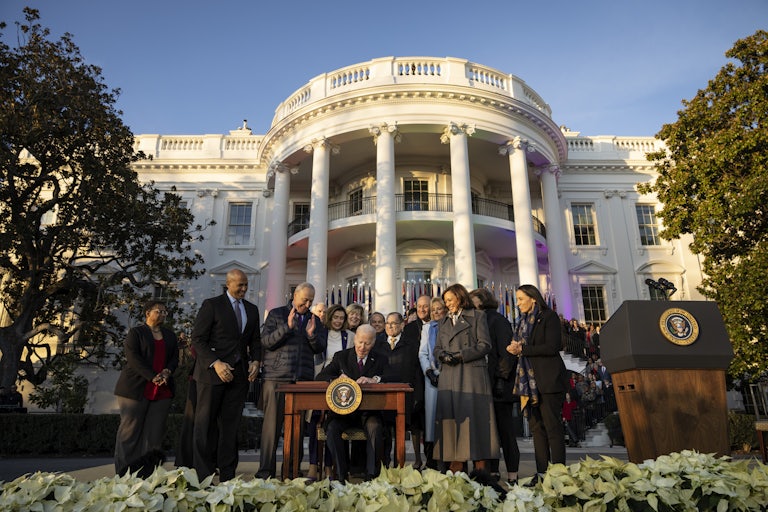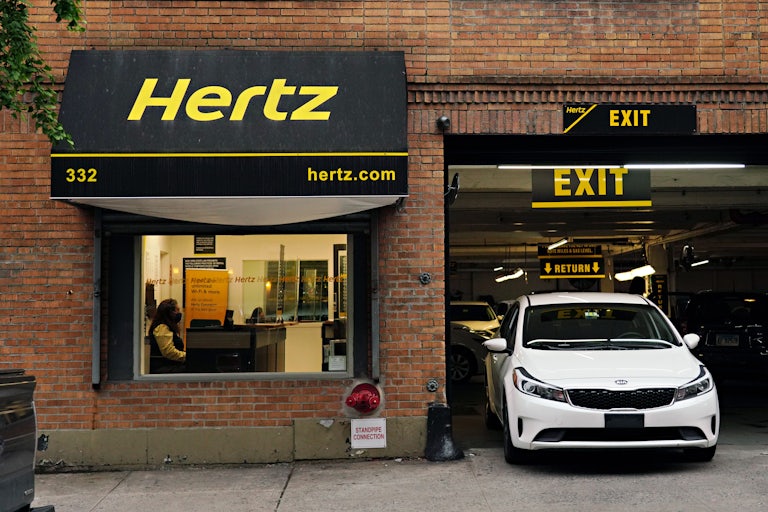Did the Media Get Derailed in East Palestine, Ohio?
Critics who have blasted the press for ignoring the Norfolk Southern disaster have missed the mark, but not by much.
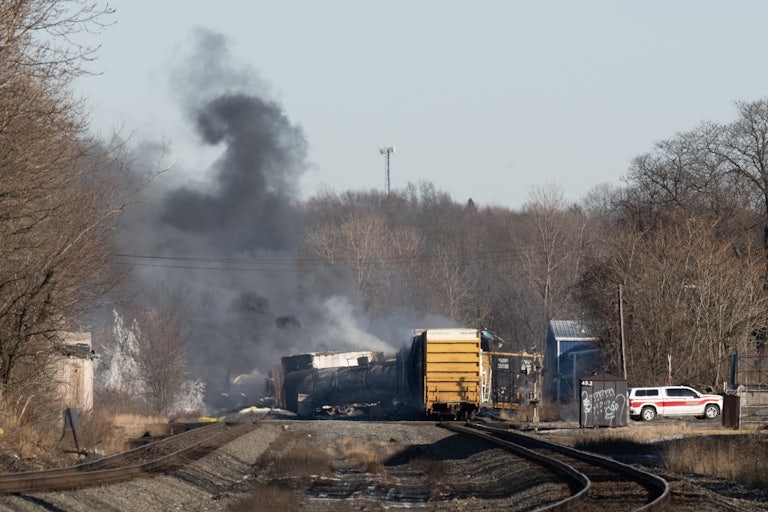
The February 3 derailment of a Norfolk Southern train and the cinematic environmental disaster that followed has plunged a small Ohio town into chaos. The New Republic’s Prem Thakker spoke with several residents of East Palestine, Ohio, this week, who have told a fairly consistent tale of related woes: sudden and worrying health concerns to humans and pets alike, a lack of guidance from local officials, and paltry offers of compensation from the rail company. The story, as a whole, contains the elements of something truly scandalous—a disaster of Deepwater Horizon proportions. But along the way, accusations of a second scandal have emerged from some quarters, who have accused the media of giving the story short shrift.
Is the accusation fully fair? It may not seem obvious, but for us to know anything about the derailment, some media, somewhere, had to cover it in some way. The truth of the matter is that the story is getting robust coverage, especially where it matters: locally. As Joe Donatelli, the digital director of News 5 in Cleveland explained in a long thread on Twitter, “To say it’s not being covered at all is wrong if you know how to Google.” Cable news channels and major national dailies have also, if somewhat laggardly, covered the story; there’s been no “news blackouts” of the events in East Palestine. Nevertheless, it’s clear that there are obvious expectations among the broader population of news consumers that aren’t being met by the big legacy media outlets.
So what is it that makes sufficient media coverage sometimes seem insufficient? There are some boring reasons: East Coast media bias, as The New Republic’s Matt Ford noted, is real—and it’s an especially galling factor in coverage of the environment. It’s not hard to imagine the western wildfires receiving substantially better coverage if the news industry were centered in California. But the perceived shortfall can’t be entirely attributed to industry shortcomings. Some have to do with the facts on the ground.
We should be thankful that there is not a massive death toll (at least among humans) as a result of the derailment; we can also acknowledge that the lack of casualties makes the story less urgent to some newsroom leaders than, say, the recent mass shooting at Michigan State University. East Palestine’s emergency, moreover, will be slow to unfold. While we’re already getting a good sense that this train crash will have a dire environmental impact, the fuller picture those facts will ultimately present isn’t currently at hand. In fact, we may want to reserve judgment about how well the mainstream media covered this matter until a few weeks from now. When that fuller picture emerges, will the big leaguers still be willing to beat a drum?
The coverage of the derailment also suffered from the fact that cable news and the major newspapers were transfixed by a story that seemed, both at the time and in retrospect, much sillier: the Chinese spy balloon(s). But perhaps the biggest reason the derailment story hasn’t dominated the news cycle is that it lacks a clear and obvious partisan frame, and thus there’s no clean way to fit it into a tidy “left versus right” construct. The Deepwater Horizon disaster was a monumental story in part because its proximity to New Orleans inspired the media to ask if this was “Barack Obama’s Katrina.” With regard to the derailment, we don’t have clear partisan villainy: It’s a product of Republican-backed deregulation and austerity, the Biden-supported quashing of a rail workers’ strike, and years of bipartisan obeisance to shareholder capitalism that created incentives for firms like Norfolk Southern to lengthen their trains without adding upgraded safety measures.
That this failure has so many fathers also adds a level of complexity to confronting the powerful interests involved. There isn’t always a tremendous appetite for these kinds of confrontations at big legacy news organizations of the sort that, say, welcome Pentagon “message force multipliers” or uncritically print the accounts of cops as the first draft of a news story. From many thousands of feet in the air, perhaps the legacy media can see the balloons better, but they’re less attuned to the inequities at the root of these kinds of stories and have less of an understanding that “politics” can best be measured as a force that acts on ordinary people. There’s a reason that TNR’s Thakker was quicker to the punch in getting the straight dope from East Palestine locals than reporters at The New York Times or The Washington Post: We have fewer resources but a keener interest in that aspect of the story.
But there’s something genuinely gladdening to take away from this inquiry into the modern media. Those who’ve been left so vocally dissatisfied by the coverage of the Norfolk Southern disaster are demonstrating good instincts in terms of what should constitute substantive news coverage of the events that shape our lives. What’s more, they’re showing laudable character in their desire not to turn away from strangers in need. There’s no guarantee that there will be some widespread self-correction among the biggest media firms, but without this public consumer demand for a better brand of news, a better brand of news won’t be possible.
This article first appeared in Power Mad, a weekly TNR newsletter authored by deputy editor Jason Linkins. Sign up here.
